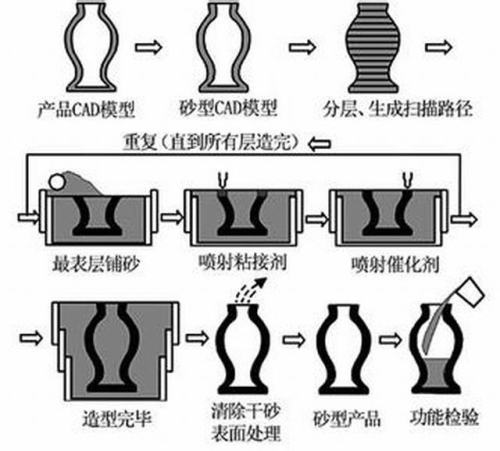
Rapid prototyping technology is a modern manufacturing technology developed in the mid and late 1980s. It is a general technical term for rapidly fabricating three-dimensional physical entities with arbitrary complex shapes driven by CAD models. Unlike traditional removal molding, rapid prototyping is a discrete stacking process. This process can be divided into discrete and stacked processes.
The basic principle: using layered cumulative hair, that is, using CAD modeling, STL file generation, hierarchical slicing and other steps for data processing, the use of computer-controlled molding machine to complete the body of the material manufacturing.
The basic process is: First of all, design the computer three-dimensional model (digital model, CAD model) of the required parts, and then according to the requirements of the process, according to a certain rule, the model is dispersed into a series of ordered units, usually pressed in the Z direction. Definite thickness for discrete (commonly known as layering), the original three-dimensional CAD model into a series of layers; then according to the contour information of each layer, input processing parameters, automatically generate NC code; finally formed by the forming machine A series of layers and automatically join them to get a three-dimensional physical entity.
Features: rapidity, high flexibility, independence from complexity, integration of design and manufacturing, and extensive materials.
At present, there are more than a dozen molding methods for rapid prototyping technology. Each method has its own characteristics and practical range. The more mature and commercial molding methods are: three-dimensional light curing molding, layered solid manufacturing, selective laser sintering, fused deposition molding.
AEO are typical of non-ionic surface active agent, oxygen molecules of base mesh can be adjusted in the process of synthesis of human, it can be made of different properties and uses of non-ionic surface active agent, ether bond in the molecular is not easily destroyed by ACID, alkali, high stability, and it owns better water soluble, electrolyte resistance, easily biodegradable, small bubble, it is widely used in textile printing, dyeing industry and washing industry.
1.The series of products are acid-resisting and alkali-resisting, which is not sensitive to hard water. Cold washing performance is good. It also can be used to produce industrial cleaning agent.
2. In the textile dyeing and printing industry, because of its good scouring, diffusivity, levelness, wetability and foaming properties, it can be used as all kinds of dyes leveling agent, dispersant, peel color agent, retarding agent, printing reserving agent, prevent white agent and brightening agent.
3. In the chemical industry, it can be used to produce glass fiber emulsifier, chemical fiber spinning oil components, and improve spinnability of chemical fiber.
4. Used as a cleaner in the metal machining processes, it makes much easier to remove surface oil pollution, thus the follow-up process will be convenient.
5. In the latex industry, used as polymer emulsifiers in emulsion polymerization industry.
6. In the pesticide industry, it is used as fruit tree pesticide penetrating agent, emulsifier.
Fatty Alcohol Ethoxylated,AEO,Fatty Alcohol Polyoxyethylene Ether,Alcohol Ethoxylate,AEO-3
HENAN JINHE INDUSTRY CO.,LTD , https://www.hnironoxide.com